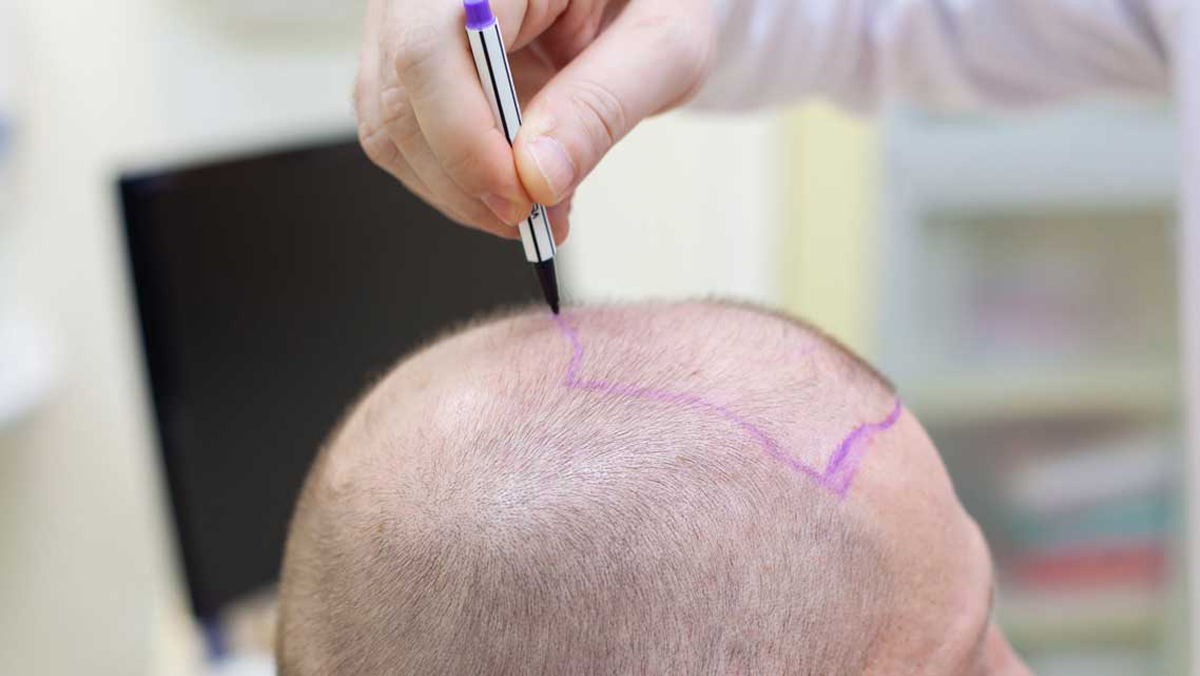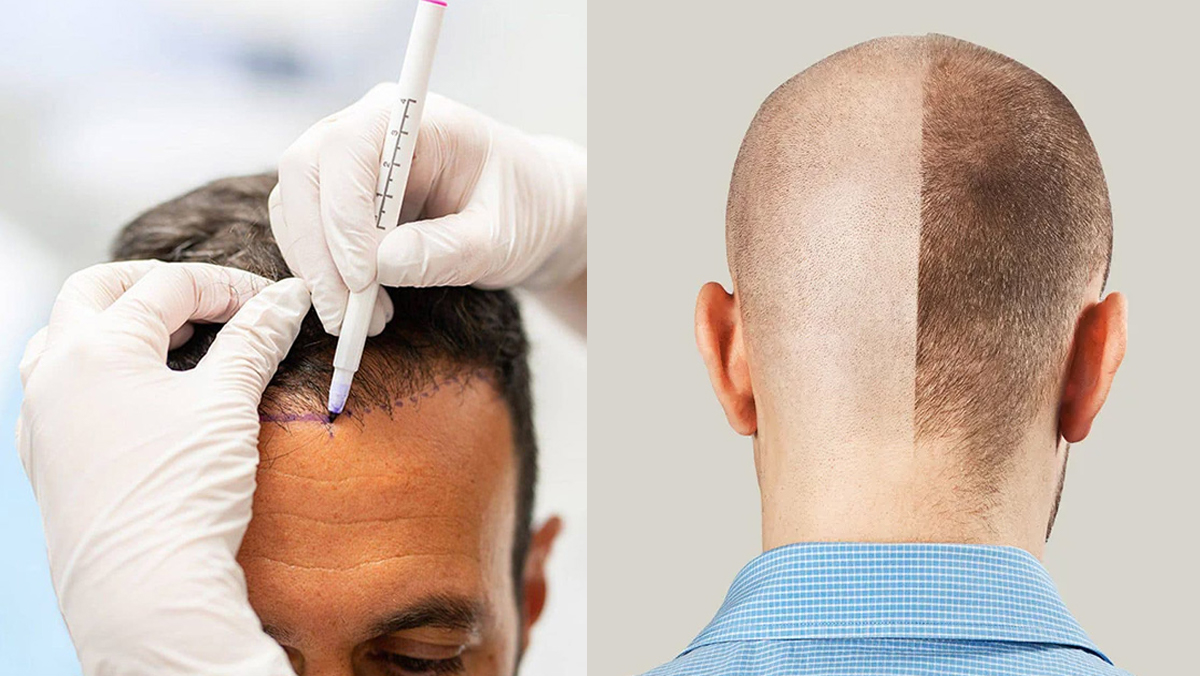
HAIR TRANSPLANTATION
DHI
Direct Hair Implantation (DHI): or in other words direct hair transplant method, is generally considered one of the most effective hair transplant techniques in the world. It’s an innovative technique based on the triple synergy – technique, teamwork, and state-of-the-art technology.
DHI direct hair implementation is the world’s most advanced technology providing results, which goes above and beyond patients expectations.
Step 1: Extraction Phase
DHI hair transplant procedure starts with the extraction phase. The removal of the hair follicles from the donor area is always performed under local anesthesia. Follicles are removed one by one and placed in a special environment and solution under a specific temperature to enhance their natural development.
Step 2: Placement Phase
During the placement phase, follicles are transplanted using a special single-use implanter tool. This sophisticated tool doesn’t require the creation of slits or holes on the patient’s scalp.
The DHI implanter gives a surgeon full control over the entire process, which gives a natural-looking result
BENEFITS :
- Maximum grafts viability – extremely high rate of grafts viability that greatly surpasses the industry average.
- DHI hair transplant requires local anesthesia.
- Patients will regain their hair in a natural way which ensures maximum hair restoration.
- Short recovery time – the time it takes to recover from the procedure is short.

FUE
Follicular Units Extraction (FUE) would be the technique you are looking for. Its safety and reliability have been proven over the years, and it is considered the best hair transplant technique. If you are undergoing an FUE hair transplant or looking for a hair transplant technique, you need to gain detailed information about FUE, its benefits, and procedures.
Step 1: Hairline design and drawing
Your doctor examines your old photographs, analyzes the forehead muscles, and designs your hairline for you.
Step 2: Shaving the scalp
Your scalp will be shaved.
Step 3: Donor area determination
An assessment of your donor region will be conducted, and a harvesting plan will be developed.
Step 4: Local anesthesia
Local anesthesia Will be injected into the whole scalp area. This ensures that your hair transplant will be minimally painful. To further decrease the pain level, pre-needle-free anesthesia is also offered for the patients who want the smoothest possible experience.
Step 5: Donor area harvesting
The donor region will be used to harvest hair follicles for transplants. The number of follicles in a graft determines the kind of graft (1,2,3 or 4). A professional donor extraction ensures undetectable results after complete recovery.
Step 6: Channel opening
Channels are opened in the recipient region using tiny blades (metal or sapphire). Channel opening requires a significant amount of expertise and competence.
Step 7: Implantation
Grafts are distributed according to the implantation plan and the number of follicles in each graft and implanted in the opened channels. Generally, frontal parts get more density, and crown parts get less density.
Benefits:
- More Convenience
- Better Price
- Less Scarring
- Shorter and Easier Recovery
- Higher Technology
Sapphire FUE
Latest Technology in Hair Transplant.
The latest technological advancements have made hair transplant procedures more precise, effective, and painless than ever before. The newest development in this long-established field of medical science is the so-called FUE hair transplant technique. This cutting-edge method has recently become even more successful, largely thanks to special surgical devices made with sapphire blades.
This most innovative and advanced hair transplant surgery includes the extraction process of hair follicles directly from the donor areas using the latest tools. After the extraction is completed, the hair follicles are transplanted into the patient’s receipt site using a special Choi Pen with a hollow needle.
It doesn’t require the head to be shaved. From the moment the hair follicles are extracted, it’s possible to start the hair transplant procedure.
Step 1: Preparing The Donor Area
The donor area must be shaved first to perform the Sapphire FUE procedure successfully, leaving the approximate length of 1 or 2 mm. Next, the donor area must be anesthetized. After the patient is comfortably placed face down on the table, the local anesthetic is applied. Once the anesthetic starts working, the donor area is ready for the next step – the extraction of follicular units, a.k.a. hair.
Step 2: Extracting Follicular Units
The micro punch used for extracting follicular units in the sapphire FUE technique is 0.6 to 0.8 mm in diameter. This part of the process is extremely delicate. After the punch penetrates the skin, it has to be oriented in the direction in which the hair follicle is settled in the dermis and hypodermis. The actual extraction follows, after which the grafts are selected, chemically treated, and left to rest.
BENEFITS:
- Faster Recovery
- No Irritations
- Greater Efficiency
